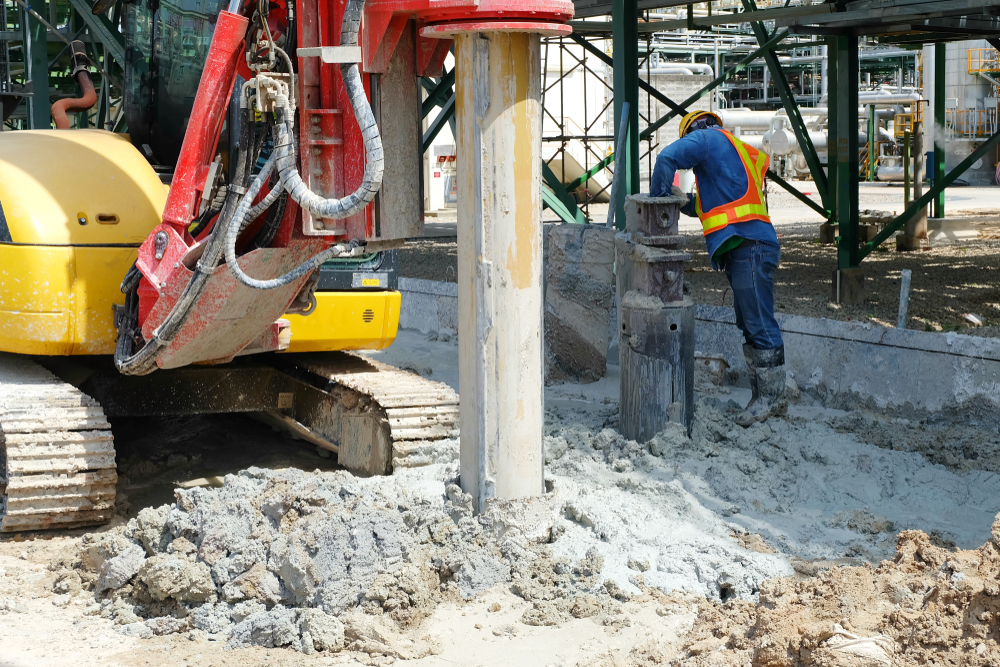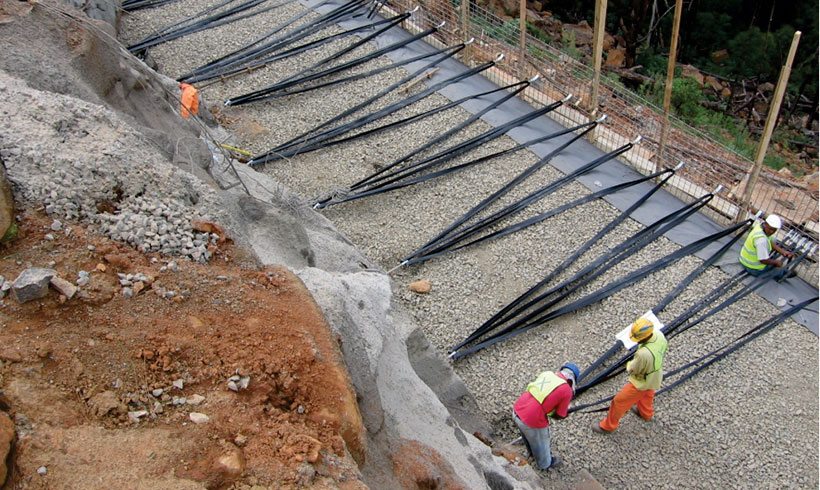Geotechnical Engineering For Construction Projects Can Be Fun For Everyone
Getting My Geotechnical Engineering For Construction Projects To Work
Table of ContentsFacts About Geotechnical Engineering For Construction Projects UncoveredThe Facts About Geotechnical Engineering For Construction Projects RevealedGeotechnical Engineering For Construction Projects Can Be Fun For EveryoneThe Greatest Guide To Geotechnical Engineering For Construction ProjectsFascination About Geotechnical Engineering For Construction Projects
During the investigation, it is vital to pierce at the needed depth and the called for number of holes as per the recommendation of the Canadian Structure Layout criterion. Sometimes, the owner may conserve some Geotechnical Investigation expense however end up spending greater than the anticipated during the building price.The responsibilities of the geotechnical specialist include offering material testing for building and construction assistance. Geotechnical Engineering for Construction Projects. Geotechnical designers analyse all the field test reports to guarantee that building is going on according to the job requirements. During construction, a confirmatory test for dirt compaction is done on-site to ensure that no future settlement takes place
After the concrete is put -7 days and 28 days- examinations are performed on concrete examples gathered from the site to guarantee that the concrete poured fulfills the design standard. Asphalt core is taken after the Asphalt is laid and compressed to validate that it meets the layout criterion. All laboratory test records are evaluated by the Geotechnical Engineer to guarantee that it meets the project specification.
Geotechnical Engineering For Construction Projects Things To Know Before You Buy

Geotechnical design plays a critical role in making certain the stability of construction jobs. Learn just how it affects layout and overall task success. Geotechnical design is an essential branch of civil engineering that concentrates on recognizing the practices of earth products, such as soil and rock. It involves evaluating subsurface problems to guarantee that a structure's structure or infrastructure is secure and secure.

For a trustworthy foundation and a smooth building and construction process, trust fund to offer the competence you require. Get in touch with to obtain specialist suggestions and geotechnical services tailored to your following project.
Geotechnical Engineering For Construction Projects Things To Know Before You Buy
When embarking on a land growth task, recognizing the ground beneath your feet is as important as the structures you prepare to develop above it. Our Geotechnical Engineering group analyse the ground, ensuring it is suitable for the proposed development while offering you with the information required to meet your project goals.
Geotechnical Design takes a look at the formation of the ground, as it is the building obstructs for all projects. Where frameworks require to be developed with regard to the ground conditions; ground conditions (e.g., soft ground) might need enhancing depending upon the size of the desired framework. Prior to structure, you need to learn about the groundwater, dirt framework, and liquefaction probability of your land.
For sites that are not attached on the local authority infrastructure added site examinations would be needed to give technical inputs for on-site stormwater and wastewater. We have experienced Geotechnical Engineers based in each office, sustaining your geotechnical demands across the country. Reach out to us to discuss exactly how we can support your next project.
These reports are tailored to meet the certain needs of a job and include layout parameters and suggestions for the building and construction of a variety of synthetic structures. As giving consultancy solutions covering locations such as incline security and load-bearing abilities for different materials, these designers take on research and development activities to enhance methodologies, devices, products understanding and evaluation covering whole lifecycles.
Not known Facts About Geotechnical Engineering For Construction Projects

Rates of pay generally enhance as your expertise and abilities grow, with guidelines aiming to a graduate beginning wage of in between 18,000 and 28,000 per year in the UK. This increases to 26,000 to 36,000 with a couple of years of experience and after that reaching 40,000 to 60,000+ for elderly, legal or master designers.
With the appropriate application it is possible to understand the occupation and gain entry to a challenging yet fulfilling and crucial profession. A rock hound would need to re-train to become a geotechnical engineer, although there is a lot of cross-over in between both occupations, which could make this easier - Geotechnical Engineering for Construction Projects. Rock hounds need to have an understanding of soils, rocks and various other materials from a clinical viewpoint, while geotechnical engineers story their knowledge of matters such as dirt and rock auto mechanic, geophysics and hydrology and use them to design and environmental tasks
When beginning, these engineers will often tend to deal with much less complicated tasks, developing knowledge and experience prepared for even more difficult job later. Geotechnical engineers tend to specialise in details locations as they grow Recommended Site in experience, concentrating on certain facilities such as railways, roadways or water. These designers also deal with renewable energy, why not check here offshore and onshore oil and gas, nuclear power, and extra.
9 Simple Techniques For Geotechnical Engineering For Construction Projects
The time taken to become a geotechnical designer depends on where you are based, where you research and what degree of education you want to obtain prior to going into the work environment. Generally-speaking it takes 3-4 years to reach the standard needs to begin a career as a geotechnical designer.
These operations allow experts to evaluate a host of soil technicians consisting of weight, porosity, void-to-solid fragment ratio, permeability, compressibility, optimum shear strength, birthing capability and deformations. If the structure requires a deep structure, engineers will make use of a cone infiltration examination to estimate the quantity of skin and end bearing resistance in the subsurface.
When assessing a slope's equilibrium of shear anxiety and shear toughness, or its ability to endure and undertake activity, rotational slides and translational slides are commonly taken into consideration. Rotational slides fall short along a bent surface, with translational slides occurring on a planar surface area. An expert's goal is to figure out the conditions at which an incline failure can happen.
Frequently, searchings for suggest that a site's dirt need to be treated to boost its shear toughness, stiffness and permeability before layout and building and construction. When it comes time to set out structure plans, experts are progressively concentrated on sustainability, more especially go to my blog how to lower a foundation's carbon footprint. One technique has been to replace 20 percent of a structure's concrete with fly ash, a waste item from coal fire power plants.